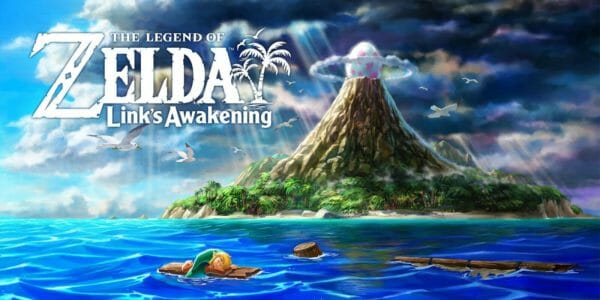Artwork for The Legend of Zelda: Link’s Awakening (Flickr)
Remakes of older video game titles have become common within the gaming industry, but few games are fortunate enough to undergo multiple reincarnations. Titles that companies decide to remake must still show a great deal of potential for success despite already being familiar to audiences. Nintendo’s The Legend of Zelda: Link’s Awakening—the original version of which was released in 1993—is an example of such a game.
Initially released for the Game Boy, Link’s Awakening was well- received by critics and was then rereleased as Link’s Awakening DX—a version which included multiple new features—for the Game Boy Color in 1998. The most recent version of this action-adventure was released on September 20, 2019, for the Nintendo Switch.
Unlike DX, the new Switch remake of Link’s Awakening is fully rebuilt from the ground up. Those who have played the original or Game Boy Color release need not worry: the map of the new version is an exact copy of that of previous incarnations of the title. The 2019 remake is faithful to earlier versions of Link’s Awakening, but major differences can also be found throughout it-the most glaring of which is the new graphical style. Everything has a charming toy-like look to it now. In addition, the game world as a whole appears far more vibrant, which is largely a result of the hardware, which is more powerful than the Game Boy. Regardless, the new Link’s Awakening remake is tainted by performance issues that should not be a concern.
On the bright side, the soundtrack is a delightful reinterpretation of the 1993 and 1998 versions, and it fits quite well with the new release’s graphical style. Also, the characters from various non-Zelda franchises make appearances throughout-from Goombas to Anti-Kirbys, there are plenty of familiar faces that will bring a smile to the face of any Nintendo fan.
Link’s Awakening follows the same 90’s plot. Link washes ashore on Koholint Island after his ship is struck by lightning during a storm, and he learns that he must collect eight magical instruments so he can awaken the Wind Fish and escape the island. He then—under the control of the player—proceeds to battle all sorts of fearsome monsters, explore puzzle-filled dungeons, and meet various colorful characters throughout his quest, which eventually culminates in a final battle that ends Link’s journey. A plot twist presented when Link reaches the Ancient Ruins creates a feeling of dread within the players as they conquer the later stages of the game: an aspect of the title which is intriguing.
In terms of gameplay, players can maneuver Link in eight directions (the cardinal directions as well as diagonally) as they attempt to traverse the map—a task that feels more fluid since the formerly separate screens of the overworld are now all knitted together into one complete map—and they can swipe their sword at enemies and obstacles-and use the items they obtain in dungeons and shops to manipulate the world around them. Speaking of items, players can manage more easily whereas combat is slightly more complicated: some enemies can only be defeated by blocking an attack to stun a monster before striking them, which adds a bit more challenge and enjoyment to fights
Link’s Awakening is not the most difficult Zelda game. While some may find this to be disappointing, it does make it more welcoming to newcomers. The game also requires less effort as well. One aspect that I would definitely consider a disadvantage, however, is the game’s length. It takes approximately 15 hours to finish the main story and to obtain the majority of the collectibles, which, for a $60 game, should raise a question for a potential buyer if this price is worth it.
Receiving scores of 9.4/10, 9/10, and 8/10 from critics such as IGN, Game Informer, and GameSpot, respectively, if playing through a colorful, exciting reimagining of a true gaming classic appeals to you enough to warrant the steep price tag, then I would highly recommend this title.
My Rating:
8.5/10








